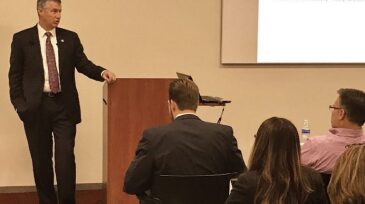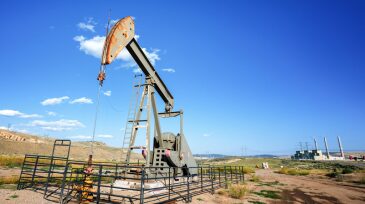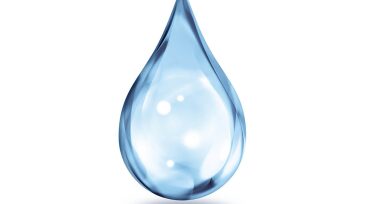Water management
This paper describes a decision-support system that integrates field data, system specifications, and simulation tools to quantify system performance, forecast operational challenges, and evaluate the effect of system modifications in water management.
This paper demonstrates that high-purity salts of calcium, magnesium, strontium, sodium, and lithium can be recovered from produced-water brine using a chemical-reaction pathway followed by vacuum-driven crystallization and a lithium-extraction process.
The authors of this paper aim to design, optimize, and evaluate a scalable and energy-efficient plasma-driven advanced-oxidative-process system for produced-water remediation, emphasizing regulatory compliance for safe discharge or reuse.
-
Newfield Exploration broke ground on a water recycling facility in the Anadarko Basin in Oklahoma.
-
A new play in the Permian Basin is unconventional in an unexpected way: there is a small group of independents producing from a watery formation where oil production begins after they have pumped only water for weeks.
-
Approaches to integrated investigative testing and root cause identification are discussed to prevent solid emulsions from stabilizing to impair flowlines and other field infrastructure.
-
A number of ongoing industry research projects are developing nanoparticles that work at the reservoir level and for fluid treatment. Though they may be a few years away from finalization, these efforts highlight nanotechnology’s increasingly sophisticated and growing application scope.
-
One of Oklahoma’s top government officials announced recently that it could be many more months before the full scope of the state’s regulatory response plan for induced seismicity is proven effective.
-
Considering the current downturn in crude prices, there is a renewed interest in recycling produced water for reuse in hydraulic fracturing in the development of unconventional resource plays.
-
If crude prices, rig counts, and tight oil production demonstrate a stronger upward trend in the months to come, US shale operators may find themselves with more produced water than they bargained for.
-
Geophysicists from Stanford University have compiled a map of new maximum horizontal stress orientations in Texas and surrounding areas, potentially giving operators new information for avoiding seismic activity in their hydraulic fracturing operations.
-
The Wyoming Department of Environmental Quality recently concluded that hydraulic fracturing operations were not the likely cause of well water contamination in a small town.
-
Sourcing water for large multifracture stimulations in west Texas is a well-known constraint on oil and gas activities in the area. A 6-month pilot operation demonstrated that produced-water reuse is technically feasible and can be a cost-effective solution.













